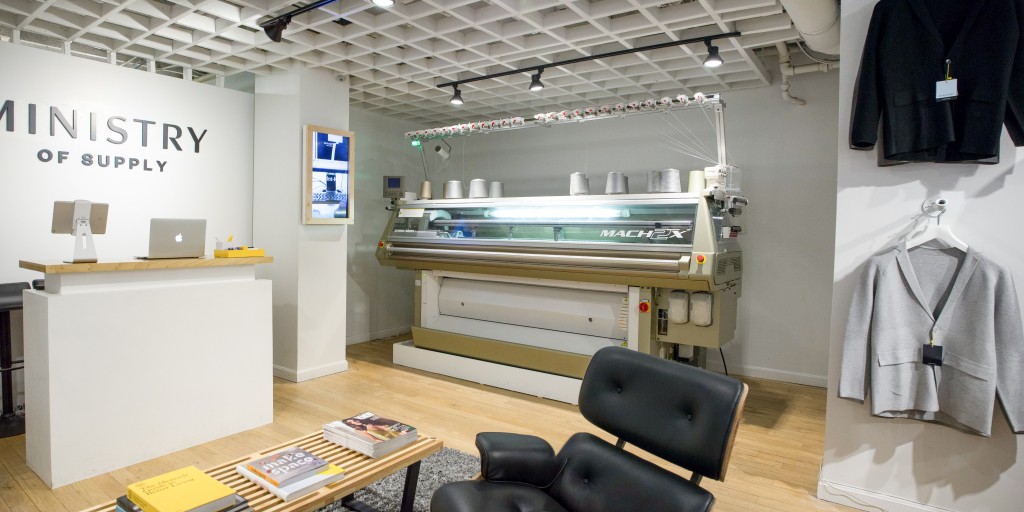BOSTON — Boston-based technical officewear specialists Ministry of Supply (MoS) recently announced the arrival of a new fixture in their hometown flagship: A 3D printer that knits garments on the spot, made-to-order.
Although we tend to be skeptical here at Lean Luxe whenever companies embrace trendy new technologies, it seems to us that MoS’ motivations are sound. But while it offers a clear benefit — individualized products for customers — there are still questions that need to be asked.

Consider:
This is right on brand. That MoS has invested in 3D printing should be no surprise to anyone who’s familiar with them. Unlike other workplace-friendly brands on the more traditional end of the spectrum — a Ledbury or an MM.LaFleur, for instance — this fits the technical ethos of MoS rather well: Experimentation has been a cornerstone of the brand’s DNA from the start. Still, at a price of $200,000, this machine is a steep investment for an operation of MoS’s size — so it’s one that co-founders Gihan Amarasiriwardena, Kevin Rustagi, Kit Hickey, and Aman Advani are all hoping (and praying) prove worth the expenditure.
Several things to note here:
- Will it actually be worth the investment? At the moment, the machine is only producing one product from Ministry’s product line: its $345 Men’s Seamless Blazer. As noted, $200,000 is a hefty price to pay just to produce a specialty product that may or may not end up being a top seller for them. It’s also a steep price to pay if this is the only garment they intend to 3D knit for the foreseeable future — and with an (optimistic) production capacity of sixteen units per day, it will take some time to turn a profit. Expect to see more activity here in some way.
- Stepping up the service element: Each blazer is made to measure — which is the whole point of having a 3D knitting machine — and takes about 90 minutes to knit. So there’s a service element at play here. Yet to bring things full-circle and the experience comprehensive, it would be a smart move if Ministry offered a ‘while you wait’ tie-in of some sort, perhaps a coffee voucher at the team’s favorite neighborhood coffeehouse or something thoughtful in this vein. This would go far offer a complete experience and help customers feel like there’s a true service program at play.
Our assessment from a strict modern luxury lens:
Very consumer-centric. There are a lot of real positives in this for MoS, including being able to reduce material waste, and creating a specialized, unique in-store experience (and thereby giving customers another solid reason to visit the store as e-commerce continues to grow). This also directly addresses two big modern luxury themes: being consumer-centric, and offering individualized services or products for shoppers. (Remember, luxury is trending away from the logo as a signifier; increasingly, it’s about offering individualized, or exclusive, products for customers.)
Tech that’s actually useful. You’re likely aware that several brands are trying to find ways to blend luxury with technology, particularly within retail. The motives behind that are sound, but the end result is often gimmicky, impractical, or not inline with shopping behavior as it actually occurs in everyday circumstances. MoS’s new machine it technology, yes, but the machine is not the story. Rather, it’s what that machine enables MoS to do, which again, is creating a specialized item to order — and quickly. This is technology that we believe to be truly useful, not some tech-enabled mirror that you can play with and then quickly forget about.
A view into the future. From a broader industry perspective, MoS offers an idea of what we might expect with 3D printing for modern luxury brands: a mix between specialized production services in-store, that accentuates DTC e-commerce on the standard product line.
Reporting Queue
-
Felixl






